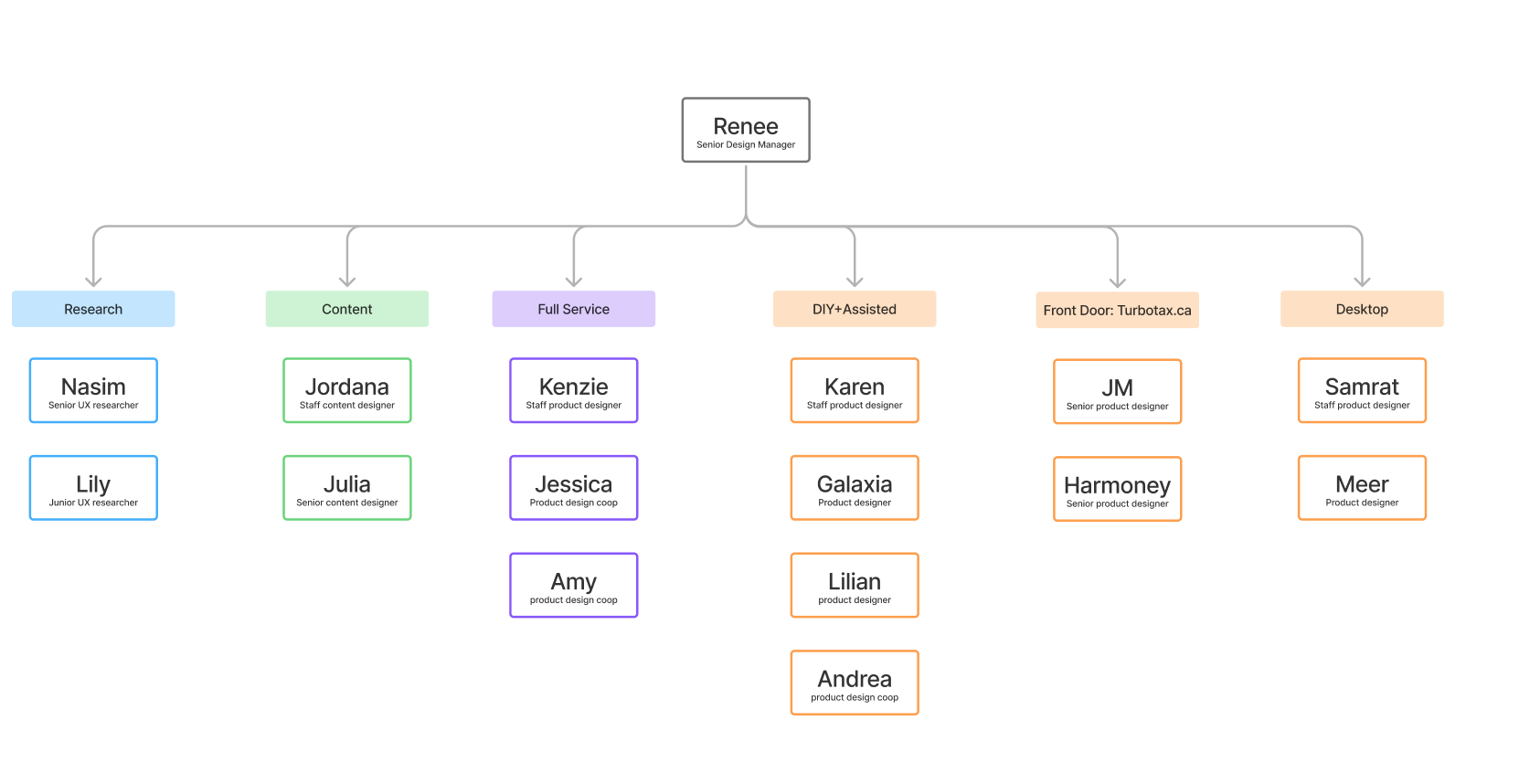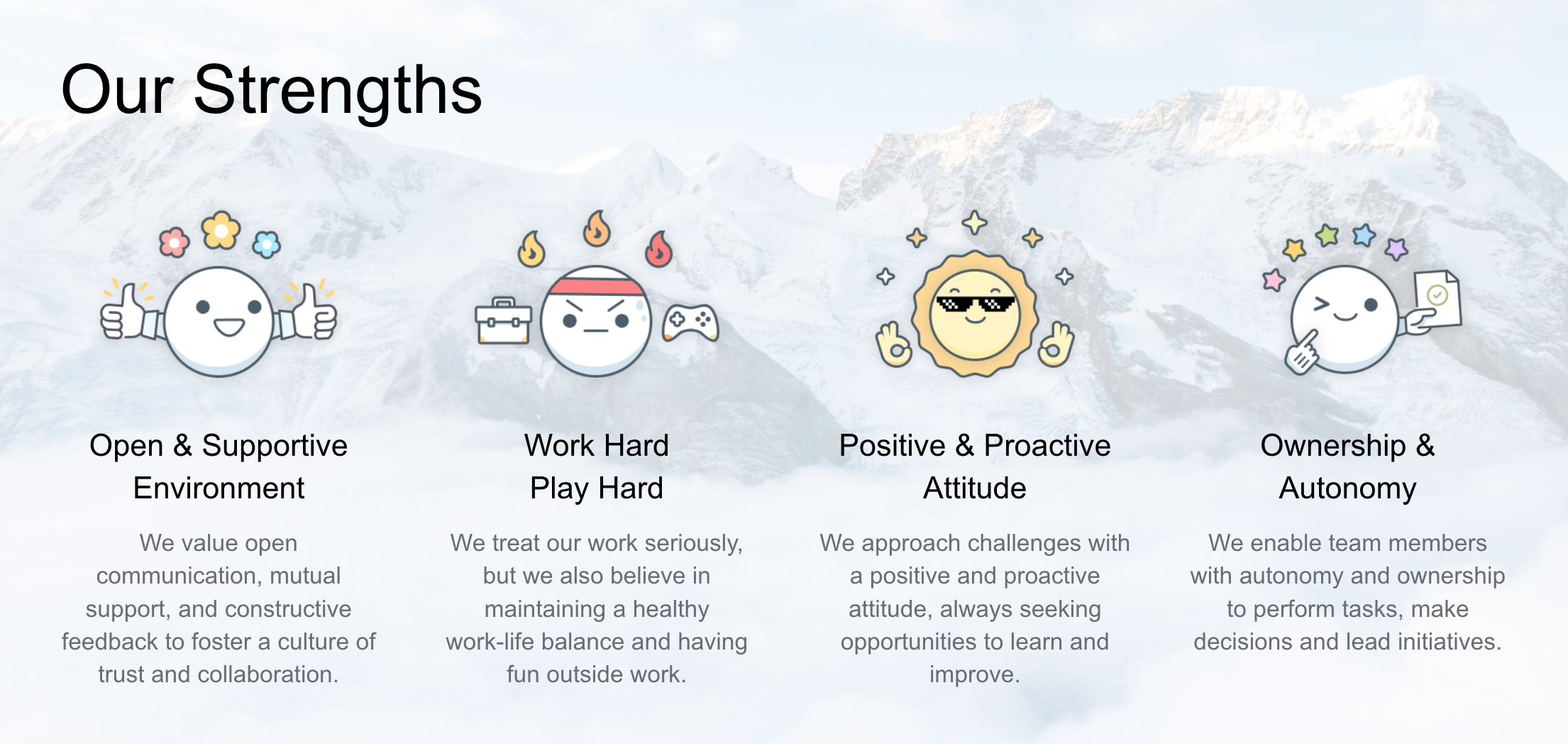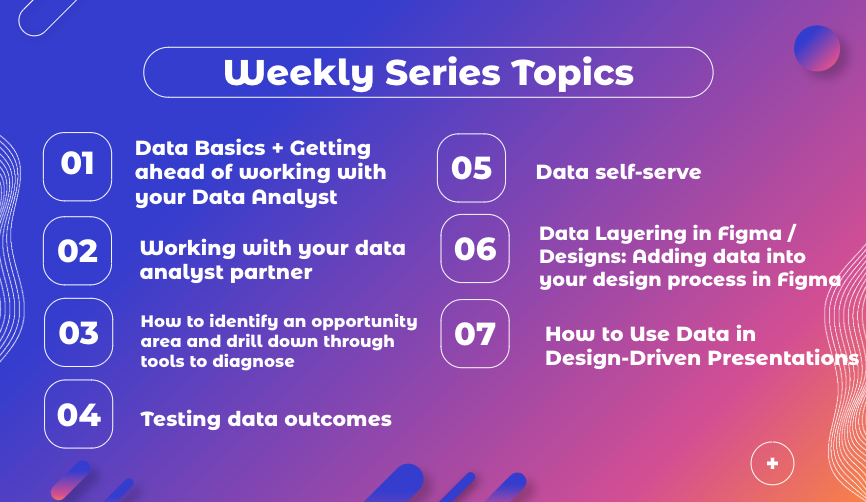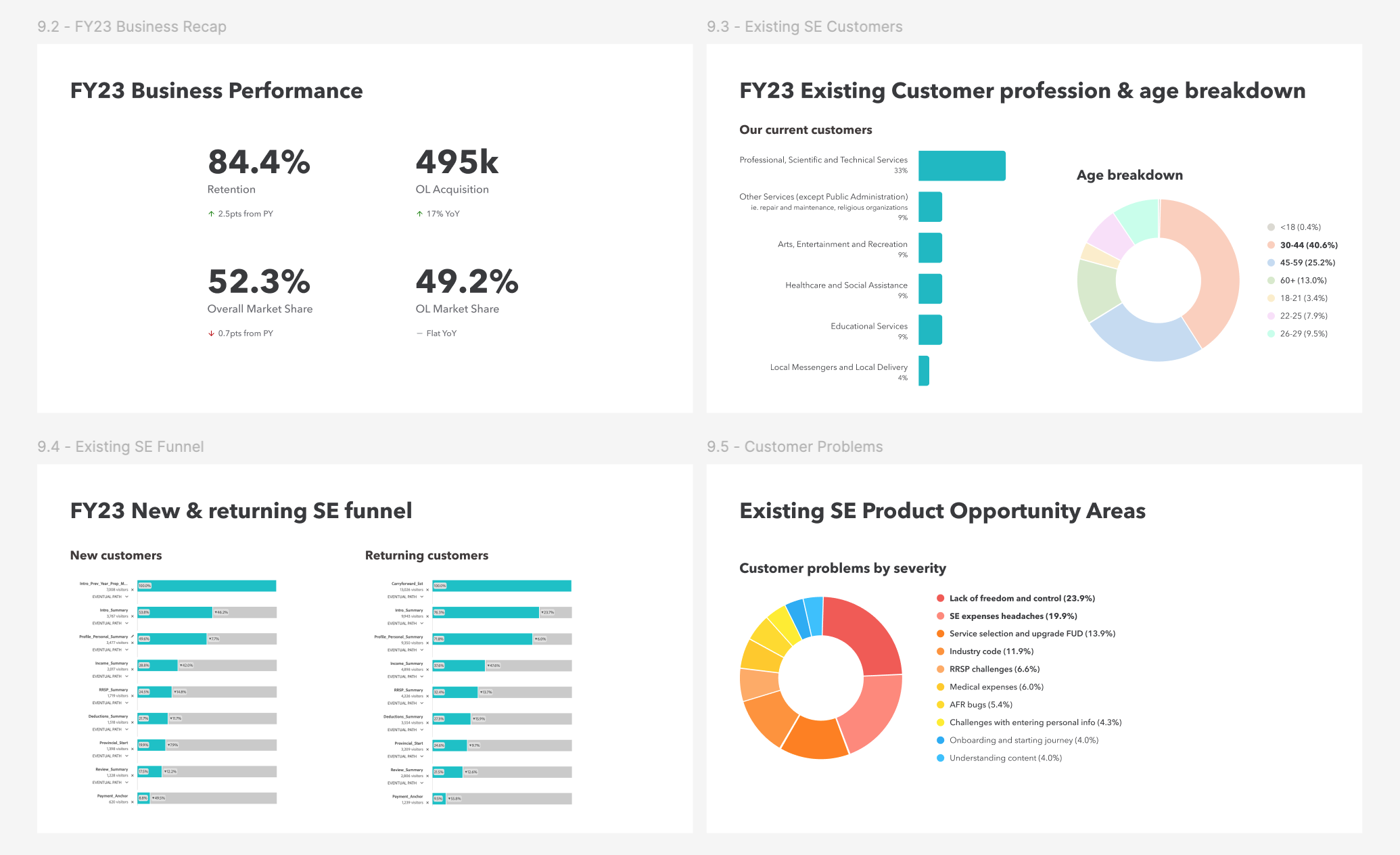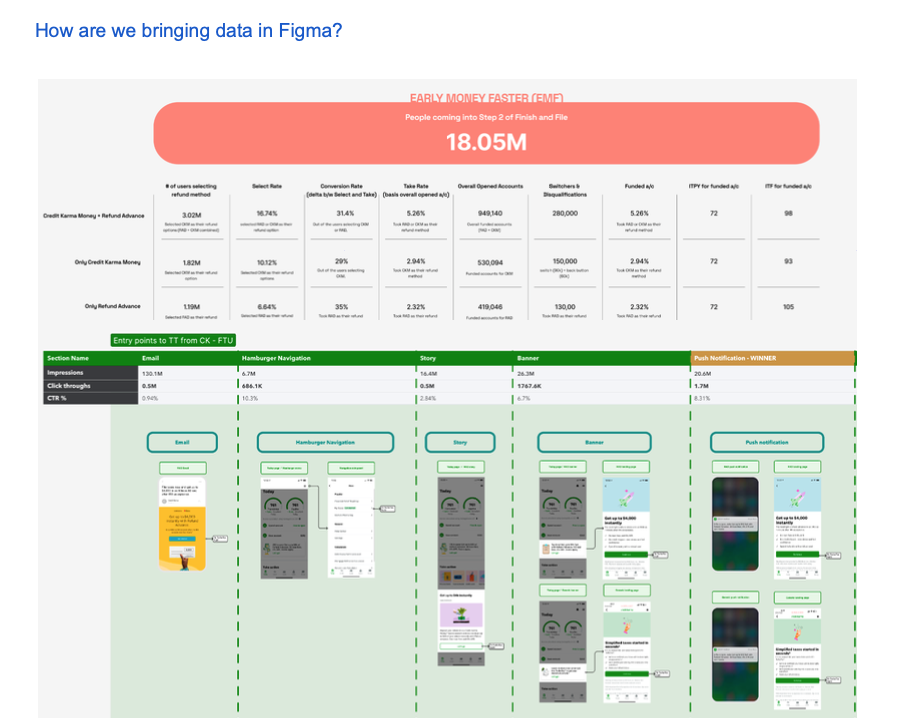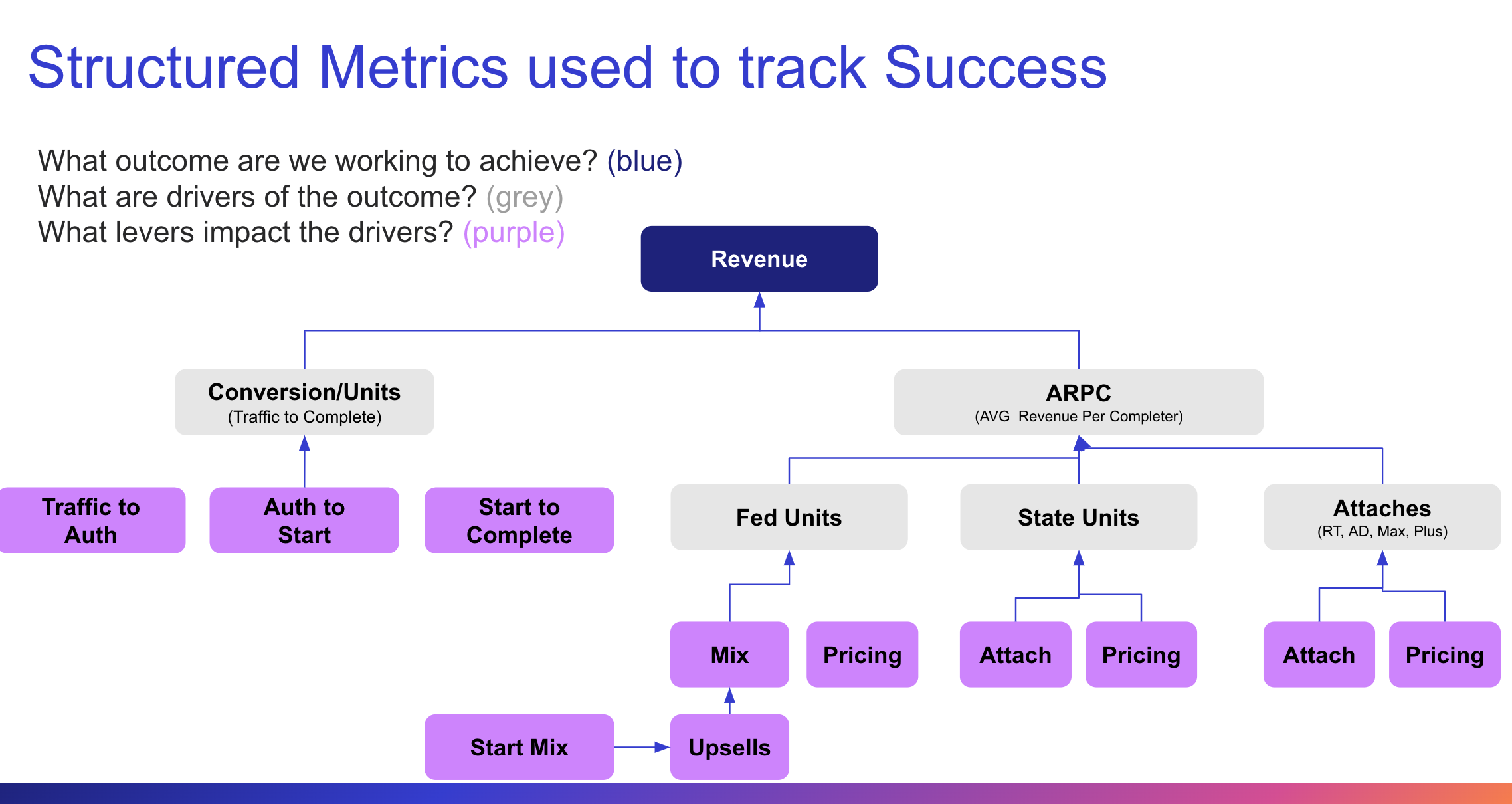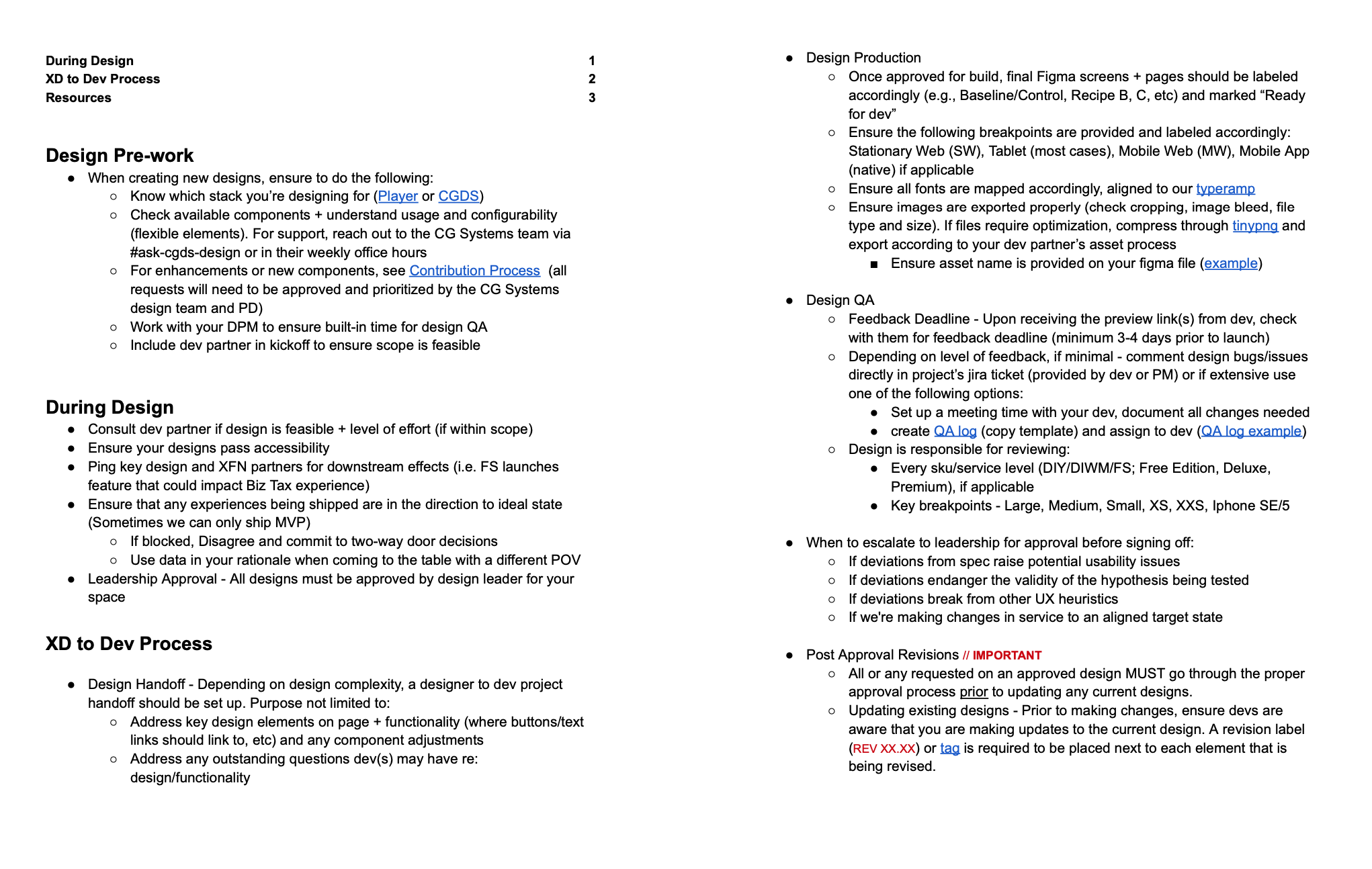Leading Design Team to Deliver Business Impact as a Manager
#peoplemanager #leadership #enterprise #cross-functional partnership #businessimpact
Overview
Intuit is a global financial technology platform that empowers individuals, small businesses, and communities to thrive through innovative solutions like TurboTax, QuickBooks, and Mint. I joined Intuit as a Principal Designer, leading end-to-end design cycles. Later, I was promoted to Senior Design Manager, where I led and grew Intuit’s Canada design team.
As the Canadian market expanded, the design team faced increasing demands to transition from a small group of individual contributors to a strategic, high-performing team in a post-COVID hybrid work environment. In this role, I’ve successfully scaled the design team, cultivated an engaging culture, elevated design maturity while optimized operational workflows, and strengthened cross-functional partnerships—driving measurable impact for both customers and business growth.
Outcomes
Drove 67% revenue growth (90M→150M) and improved NPS by 25% by scaling customer-centered design strategies for a 5M+ user base.
Built and expanded a high-performing design team (including product, service, content, research) from 5 to 15+ across the US, Canada, and India, boosting team engagement by 32% and performance by 40%.
Streamlined cross-functional collaboration across Product, Engineering, Marketing, Data, and Customer Success, reducing project delivery timelines by 24%.
My Leadership Philosophy
My leadership journey at Intuit has been transformative–from struggling to mastering the art of context switching, altitude changes (zooming in and out), and relentless problem-solving. To me, leadership is about bringing out the best in others to achieve great results. At its core, leadership comes down to two fundamentals:

People
Engagement & Retention: Are my team members happy?
Am I fostering a culture where my team feels valued, inspired and motivated?
Performance & Enablement: Is my team set up for success?
Does my team have the resources, support, and clarity they need to do their best work?
Mentorship & Career Growth: Does my team have a clear path for growth?
Am I guiding my team grow, find their voice, and see a meaningful future in their careers?
Impact
Business Success: Are we delivering measurable outcomes?
Is our work aligned with business goals, and are we delivering tangible results?
Stakeholder Collaboration: Are we building trust and alignment?
Am I fostering strong cross-functional partnerships with to ensure seamless collaboration and shared success?
Innovation & Influence: Are we shaping the future?
Are we act as a strategic partner, driving innovation and shaping the future of the business?
Challenges & Opportunities
Through firsthand experience as a principal designer, 1:1 conversations with team members and partners, and data on team well-being, operational efficiency, and business outcomes, I identified the following opportunity areas:
1. Scaling Design Teams to Meet Growth Needs
Rapid growth required scaling, but lacked structured resource planning, onboarding, and strong team culture in a hybrid environment.
Limited mentorship and personalized career development hindered retention and growth.
2. Increasing Design Maturity and Cross-Functional Collaboration
Designers lacked data & business acumen, limiting the potential and strategic impact.
Inconsistent internal and external collaboration such as design critiques, dev hand-offs slowed down delivery and reduced quality.
3. Transitioning Design Team from Executors to Strategic Partners
Design was perceived as “creating flows and UI,” limiting its strategic influence.
Design work lacked visibility in strategic discussions with senior leadership, missing opportunities for feedback and strategic impact.
Actions & Outcomes
Opportunity 1: Scaling Design Teams to Meet Growth Needs
My Actions
- Developed a scalable team structure, streamlining hiring and onboarding process to grow the team across product, service, research and content.
- Created a Design Studio for in-person collaboration and launched Design Jams—creative forums for remote team members to connect, get inspired and practice design thinking.
- Implemented personalized career docs for each team member using the GROW framework, outlining short- and long-term goals, values, strengths, and growth areas. Conducted weekly 1:1s and monthly check-ins to provide feedback and align on tangible actions.
Org chart
Personalized career doc
Skill assessment
1:1 retro
Team culture
Design Jam - Love Bombs+Inspo from dating apps
Design Jam - mona lisa
Collaborative Workshops
Design Studio Transformation
The Outcomes
- Scaled the team effectively from 5 to 15+ members while maintaining diversity and quality.
- Increased team engagement by 32%, achieving the highest engagement scores in the organization for three consecutive years.
- 60% of team members were promoted to the next tier within three years. Achieved a 40% increase in coaching and guidance satisfaction on internal surveys.
Opportunity 2: Increasing Design Maturity and Cross-Functional Collaboration
My Actions
- Business&Data Acumen: Conducted educational workshops to improve business & data acumen and created reusable Figma templates with data components. Demonstrated how to present design work using data to senior leadership.
- Development Collaboration: Streamlined the E2E process of working with Dev partners. Established a Dev hands-off checklist, ensuring consistent delivery quality.
- Internal Design Critique: Created and implemented a Design Critique Guide with a step-by-step framework for presenters and critiquers. Conducted workshops to train the team and scaled the guide across the broader design and product management community.
Data Acumen Sessions
Data-driven presentation
Set Expectations
Data driven research report
Bring data to Figma
Understand success metrics
Design Critique Examples
Design Critique Guide
Design+Dev Collaboration
Outcomes
- Enhanced data fluency, enabling designers to align their work with business goals and present design work with a data-driven approach to leadership.
- Reduced project delivery timelines by 20% by streamlining the process and improved handoff quality.
- Improved design critique quality, leading to more actionable feedback and stronger design outcomes.
Opportunity 3 Transitioning Design Team from Executors to Strategic Partners
My Actions
- Built trust and transparency with cross-functional leaders by connecting with them regularly, aligning on shared goals and proactively addressing their challenges.
- Hosted monthly design & research share-outs to review design progress with cross-functional leaders, and invite them to live user research sessions to gather first hand insights.
- Showcased design’s strategic value by solving business problems beyond UI, such as improving customer retention and driving revenue growth.
Design Share Out with VPs & Directors
Live user research session
Outcomes
- Strengthened partnerships with product, engineering, data and marketing leaders, ensuring seamless collaboration on the execution level and shared success.
- Increased design’s visibility in strategic discussions, demonstrating design value on a higher level.
- Improved cross-functional trust and collaboration, resulting in higher-quality outcomes and influence on the strategy level.
Reflection
Every Team is Different, Yet the Same
Just as every designer has unique experiences, skills, and motivations, they all share fundamental human needs: belonging, fulfillment, and creativity. Similarly, every design team—regardless of size, maturity, or structure—is the happiest when making real impact for customers and the business.
When faced with broad, ambiguous challenges, I return to the basics: clarity of purpose. A clear WHY makes the HOW effortless. This mindset has shaped my leadership approach, helping me navigate uncertainty and inspire my team to achieve greater impact.
Mindset Shift: Redefining Accomplishment
Moving from an individual contributor to a leader was a profound shift. As a principal designer, success meant leading end-to-end product design. As a leader, my role became that of an enabler—empowering my team and organization to thrive.
At first, I struggled with this transition. It felt like I was doing everything yet accomplishing nothing. But I soon realized that my impact was no longer measured by personal output, but by the growth of my team and the outcomes we achieved together.
Seeing a junior designer grow into a confident leader, watching my team solve complex challenges, and knowing our work directly contributed to business success—these became my new measures of fulfillment. Leadership, I’ve learned, is about amplifying the strengths of others and creating an environment where they can do their best work.

